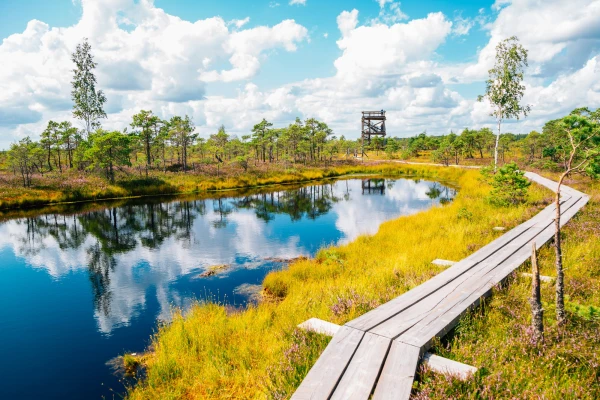
"Should we wear rubber boots?" my wife asked when I promised to take her to the nearby swamp close to the capital. No, it’s not necessary. Because the Great Kemeri Marsh – can be said to be cultivated. Man and nature touch there but do not mix. It is a kind of our safari!
What is that laughter in the marshes?
First of all, we were lucky with the weather this time. The prolonged, heavy autumn rains had not yet set in – Indian summer reigned over Latvia, and the car thermometer confidently stood at +15 degrees Celsius while driving. In a mode of maximum favor, we passed the greedy limits of paid Jurmala and turned onto the Ventspils highway. From there, almost opposite the turn to Kemeri (by the way, a separate city until 1959, while the Jurmala district was part of Riga) – a path goes to the left.
There lies the spacious, forested Kemeri cemetery. The dirt road becomes increasingly bumpy, with potholes appearing here and there. The legislation of the Republic of Latvia makes any construction, including road construction, in nature reserves practically impossible. It is surprising, though, why in Western Europe reserves and protected areas are usually equipped with quality asphalt paths?
In any case, the arrival at the destination is announced by a healthy queue of cars, the first hiccup since leaving Purvciems in Riga. It turns out that in the Kemeri Nature Reserve, this part of which is administratively located in the Tukums region, they are not fools either – are they worse than the Jurmala municipality? – and charge 4 euros for parking. It is quite tense with parking spots, so we have to wait for someone to leave. In general, we park almost bumper to bumper, but everything else is free, which is nice.
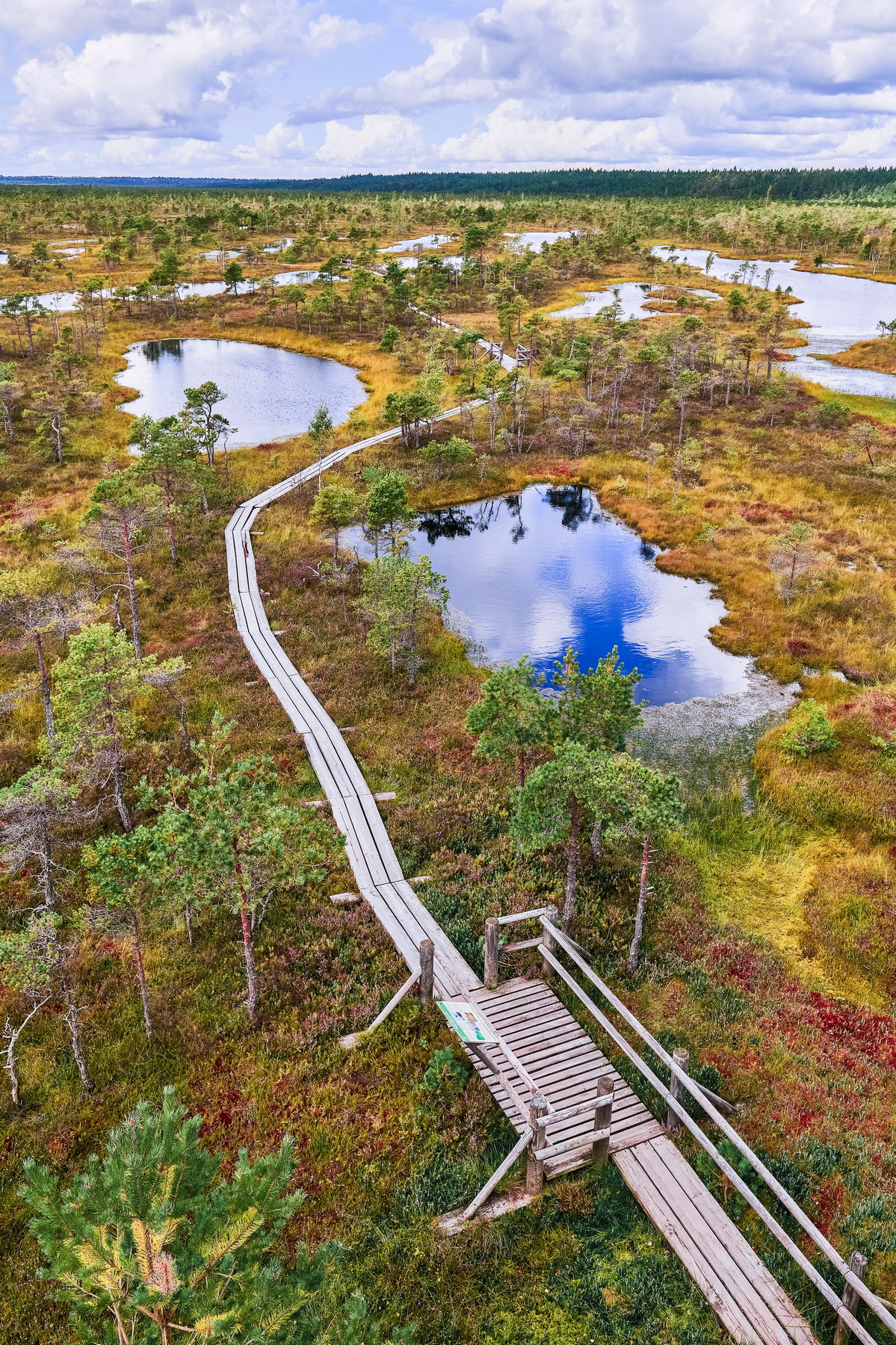
Families with cheerful children are everywhere, all dressed for hiking, some are having lunch at picnic tables. There are also plenty of foreigners – you can hear German speech and discussions about Russian universities... The marsh does not begin immediately; you first have to walk along a forest road leading among majestic pines and dense underbrush. On both sides, you can see drainage ditches, the work of human hands. A complicated system for draining high groundwater, dating back to the socialist era. But here are the signs of the new – bio-toilets, benches, posters warning of a 1000 euro fine for littering and starting fires.
On the Narrow Path
The forest becomes sparser, and an impressive man-made relief opens up before us – gentle hollows and pits. Tyrelli – this toponym was known during World War I. And this is what trenches and bunkers look like after 110 years. One can imagine what people endured, forced to fight in the marsh for two years...
We come out into a wide space, moving in a limited corridor of possibilities – along a wooden path. If there is no pocket with benches ahead where the group can rest and admire the beauty, everyone is forced to walk together at the speed of the smallest girl, shuffling ahead. This is a bit stressful.
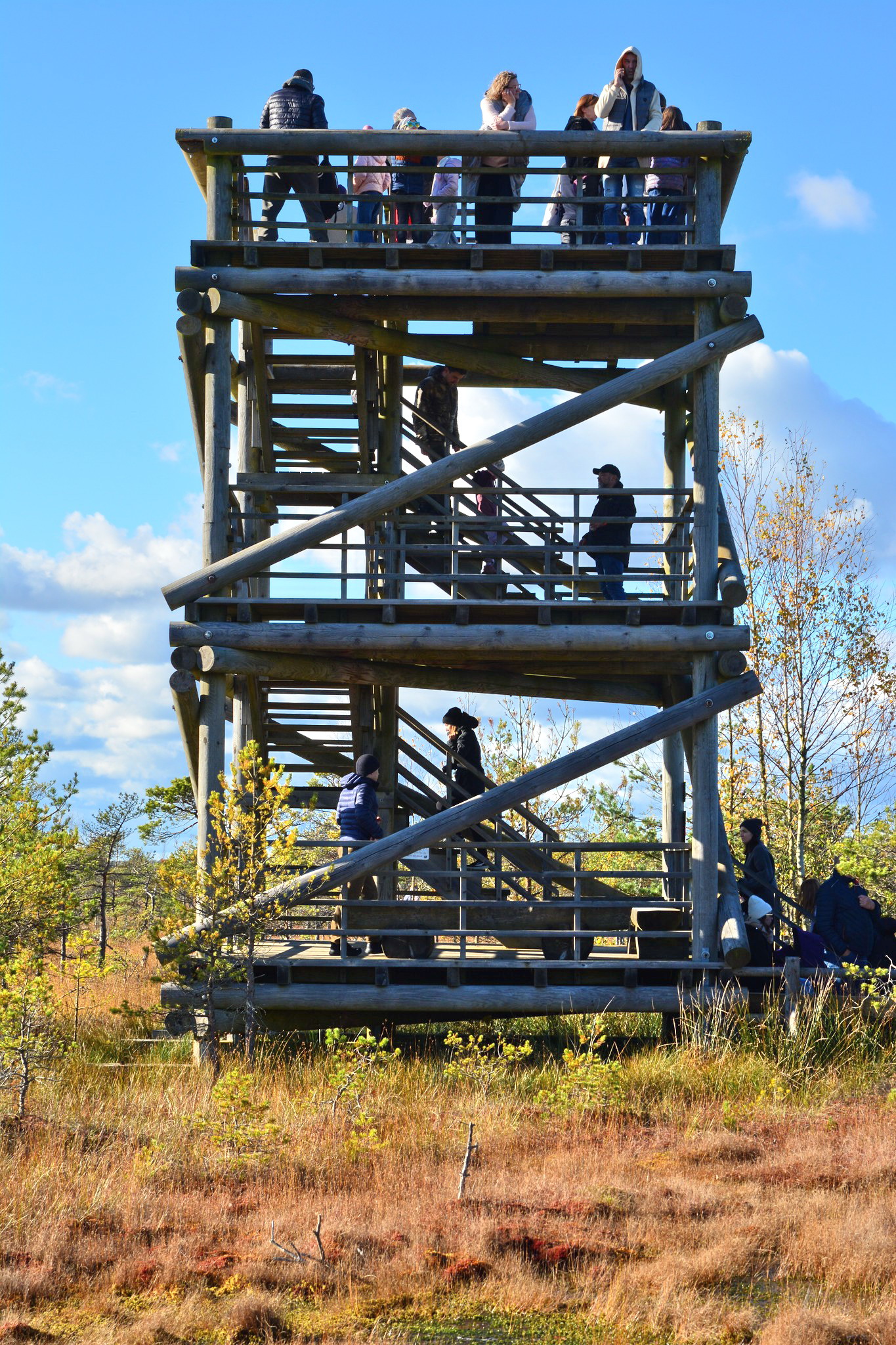
But – what views, what air. Just as ordered – both fresh and warmed just right by the midday sun. The perfectly blue sky gives a deep, blue color to all the numerous channels and ponds, which are becoming more and more. All of them are nameless, apparently because they are transient. This year they exist, but then, during the flood, they may no longer be.
If you look at the Google map, it looks as if a group of giants walked out of the shower, leaving wet spots of various sizes. Sometimes a full footprint, sometimes drops. There are literally hundreds of water bodies here, connected to each other by intricate channels. Somewhere the water becomes overgrown, and a menacingly bloody moss resembling minced meat appears.
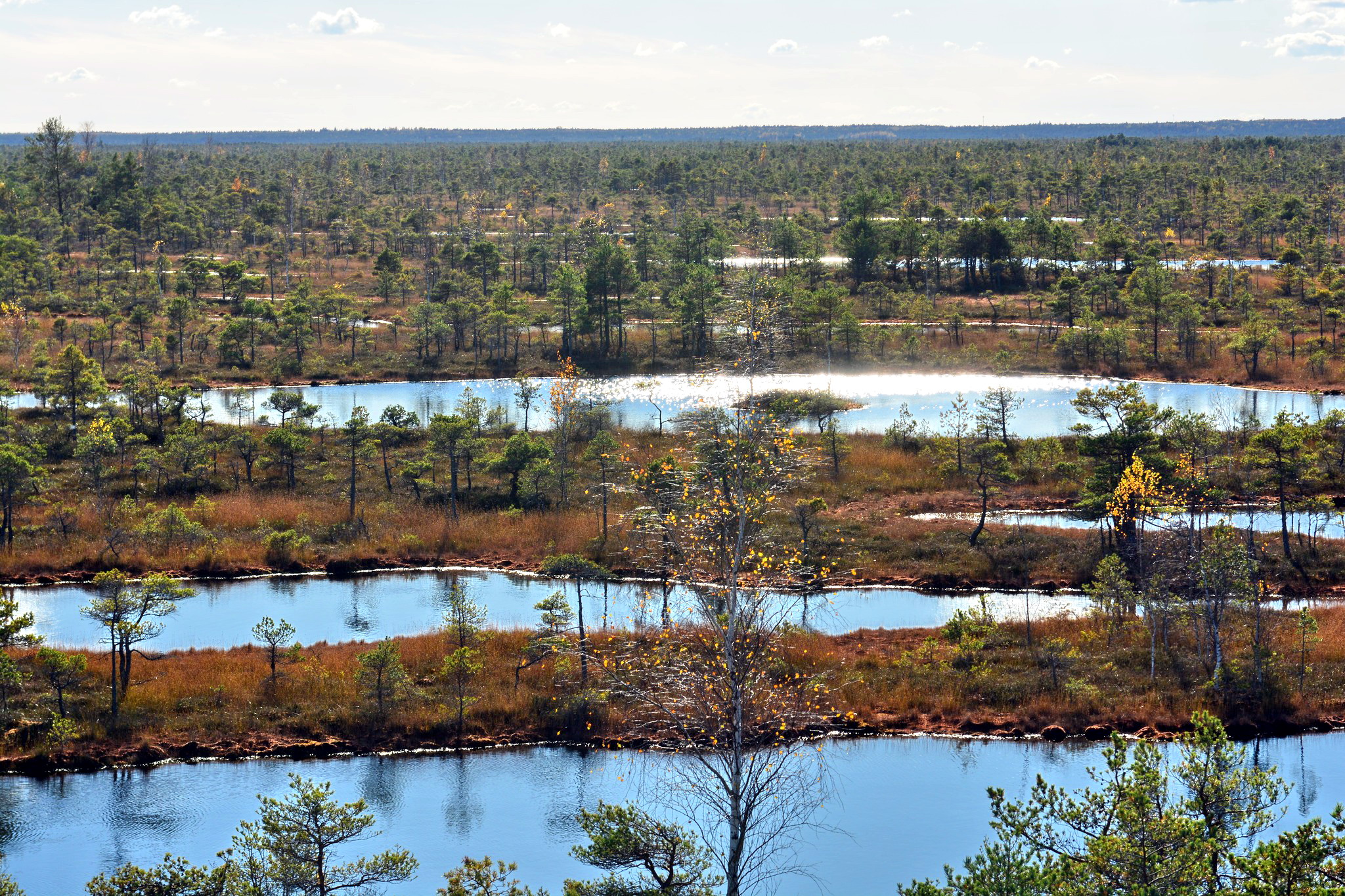
Irresistible curiosity urges one to step in, to try... The foot instantly begins to sink, and I barely pull it out with a slurp!
Waters Rich in Sulfur
The Kemeri Marsh is one of the largest moss bogs on the coast of Latvia. Its area is 5000 hectares – 50 square kilometers, or 25 territories of the Principality of Monaco. The age of the bog is about 8000 years. At that time, in the 6th millennium BC, primitive cultures already existed in Europe; for example, in what would become French Tardenois, black tribes played with shells. And the ancestors of modern Chinese were already trying to mold ceramics.
The local feature is sulfurous waters, which is why the flora in the bog is so unique. In such soil, a full-fledged pine cannot grow, which is why the local trees are miniature and cute, like the Japanese indoor tradition of bonsai. In fact, the national park could make these nano-pines its export product – however, it is clear that outside their native hydrological conditions, they are doomed. So we enjoy them slowly while we are here.
Real photographic opportunities open up from the tower, which rises like a medieval watchtower. From there, breathtaking views of the endless expanses unfold. Now the only way is forward – to the forest, which seems so far away... No turning back – three and a half kilometers of the "big circle." This is beneficial!
We are accompanied by local residents – dragonflies and beetles, as well as colorful hairy caterpillars found on the wooden path. The birds have flown to warmer lands; only the titmice at the edge greet those who have passed the marsh trip and are once again on solid, forest ground.
A great place for relaxation, but it does require a certain physical condition. For people in wheelchairs, for example, this path is absolutely inaccessible. The paths are not fenced with railings, so safety is in the hands of the travelers themselves. In the rain, of course, the wooden surface is slippery, and no one cleans it from snow.
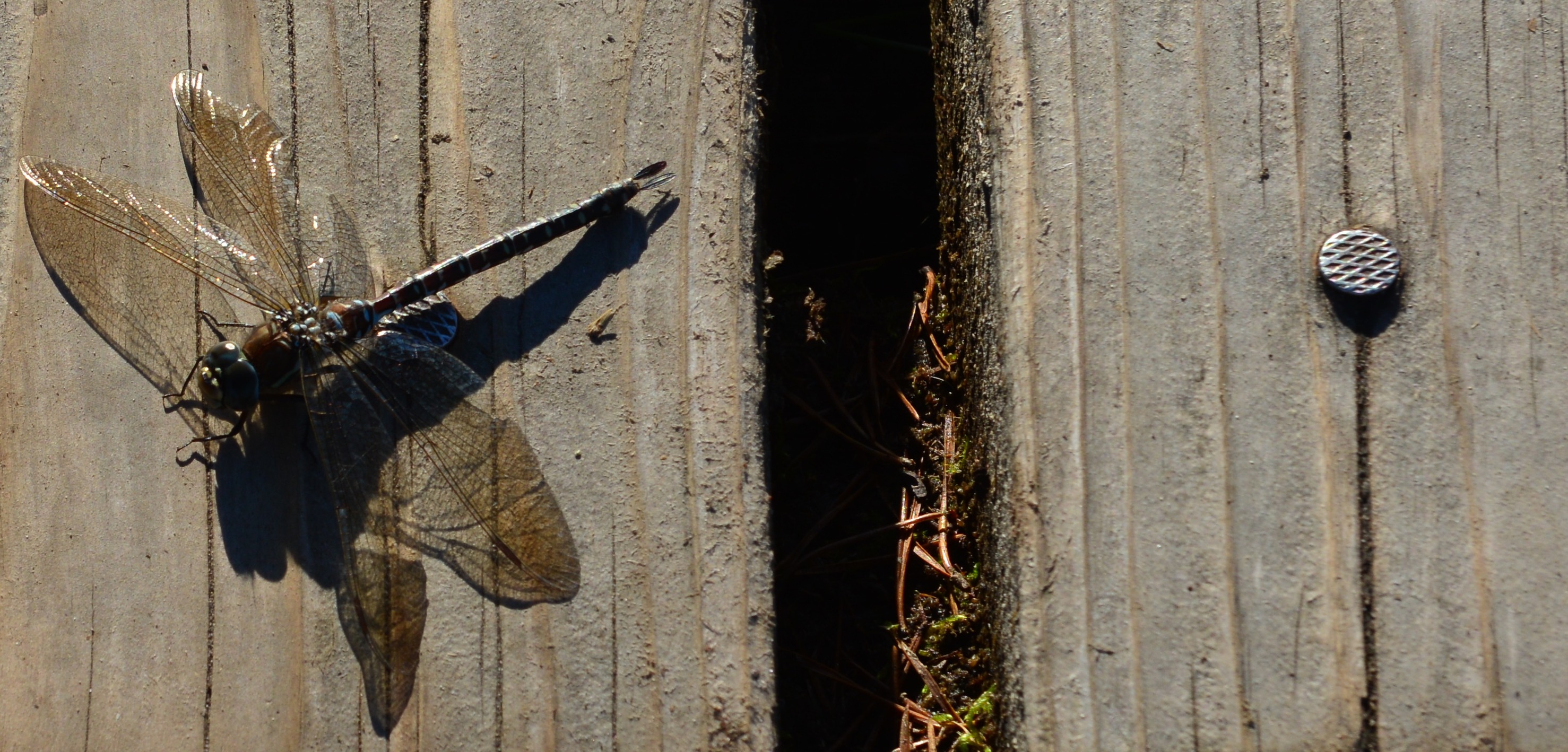
In many Western countries, to which Latvia has declared its orientation, national park services consist of numerous trained structures made up of motivated young people who love both nature and order. Dressed in uniform, employees are always ready to help. It seems that if there were at least five people on this trail in Kemeri – it would not hurt at all. But that’s just me grumbling...










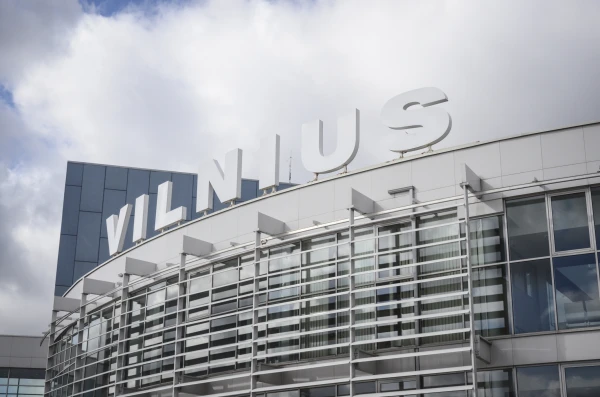



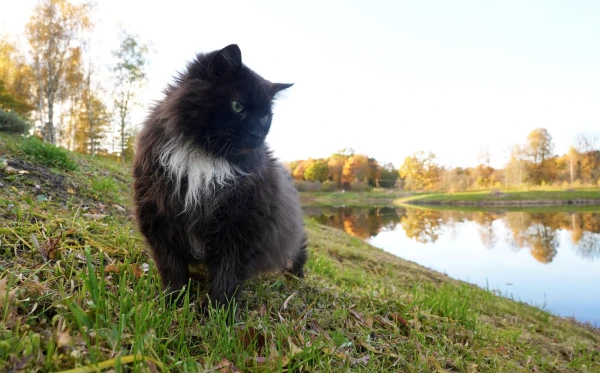

Leave a comment